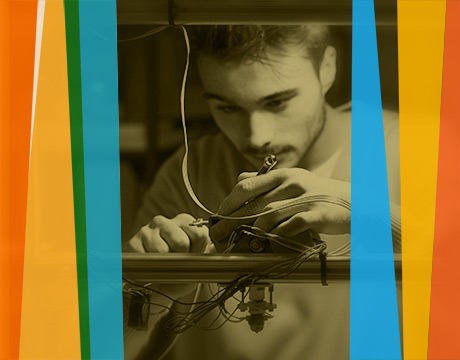E-Fest Program Planning and Objectives: a Q&A
E-Fest Program Planning and Objectives: a Q&A


On March 3, 2017, ASME will roll out the first of three E-Fests programs in Jaipur, India. Two years in planning, E-Fests are a major ASME initiative that incorporate resources and leadership at the volunteer and staff level. Here, representatives of ASME staff who are playing major roles in program planning and development share ideas regarding the making of E-Fests and what its intended audience – students and early career engineers – can expect to experience at the events.
What are E-Fests?
E-Fests are regional events that provide venues for engineering students to showcase their technical skills and abilities through participation in various design competitions. E-Fests also offer an essential networking component, to connect students to thought leaders and practicing engineers to receive practical and valuable career advice and guidance. E-Fests are built on an ‘engineering festivals’ model, incorporating technical programs, ASME competitions and social activities in one place.
Why E-Fests?
ASME has created E-Fests as a vehicle to better prepare post-secondary students and early career engineers to be a part of today’s diverse and multidisciplinary engineering community. E-Fests celebrate engineering and innovation, while also connecting young professionals to opportunities for career enhancement and preparation.
E-Fests are the end product of an organizational assessment of the Society’s role in preparing the next generation of engineers for work in the complex world of today. This assessment was exhaustive, extending over two years and collecting insights from various units of the Society, from the Student and Early Career Development Council to our technical divisions, and culling from multiple studies and reports, like Voice of the Customer and Vision 2030. Our finding was that young engineers, students especially, are seeking enhancements in the skills development space.
El-Ghobashy: E-Fests ensure that ASME is continually improving its service to its 30,000 student members in 750 universities around the world who are seeking a stronger level of engagement with peer groups, business professionals, and ASME leaders.
Smith: E-Fests add a dimension to the Society’s strong portfolio of outreach programs for the student and early career sectors, incorporating elements and components to enhance and enrich the total experience for attendees.
What are the components of E-Fests?
Smith: E-Fests will include ASME’s premier student design competitions – Human Powered Vehicle Competition, IAM3D, Student Design Competition, and Old Guard – all centralized in one event. Each E-Fest will stage regional competitions; winning design teams will continue to compete at respective ASME international conferences, such as IMECE.
El-Ghobashy: E-Fests will feature career development workshops, networking opportunities, and roundtables in which students and early career engineers interface with leaders in academia and the business community. We will also be organizing hackathons at E-Fests, in which students collaborate on design projects
Will the targeted markets be receptive to E-Fests?
El-Ghobashy: Projections are for 1,000 attendees at the inaugural E-Fests in Jaipur, with a turnout of around 550 at each of the other events.
Smith: We anticipate enthusiastic support from the host universities at each event. The host universities will ally with ASME in building awareness of E-Fests and building program content.
Loughlin: Our best assets are the attendees themselves. We expect students to embrace the opportunities at E-Fests, to immerse into a celebration of technology and innovation, spread the excitement, and serve as ambassadors for future programs. We are building a movement here!
What will be the total experience for students and early career engineers?
El-Ghobashy: The competitions at E-Fests will provide a platform for students to showcase their skills, talents, and abilities. And since E-Fests will bring distinct design competitions into one setting, students see creative engineering applications outside of primary areas of interest.
Smith: At E-Fests, students and early career engineers will have the opportunity to interact with leading corporations which are employers of engineering talent, engaging with these firms to develop deep relationships and collaborations, as well as understanding the changing landscape for business success.
How many E-Fests events are planned?
Smith: Three E-Fests are planned for 2017. In addition to the inaugural event in Jaipur, E-Fests will be held in Las Vegas, Nev., and Cookeville, Tenn.
El-Ghobashy: A focus of program planning was to create a modularity in the business model, so that all E-Fests may share the same program components and a common brand. However, each program will incorporate elements reflecting the local flavor of participating universities and companies.
How do E-Fests fit into the organizational strategy of ASME?
El-Ghobashy: Robotics and advanced manufacturing are two of the technologies that the ASME Board of Governors has identified as focus areas for the Society in FY17 – and these two technologies will be on full display at the Human Powered Vehicle Competition, Student Design Competition, Old Guard Competition, and IAM3D.
Loughlin: The Society has a rich tradition of outreach to students and early career engineers. E-Fests ensure that ASME remains invested in the next generation of engineers. The Society’s vision, reflected in this new and exciting undertaking, is for every engineering student and early career engineer to possess the tools, experience, and confidence to solve the complex challenges facing the world.



